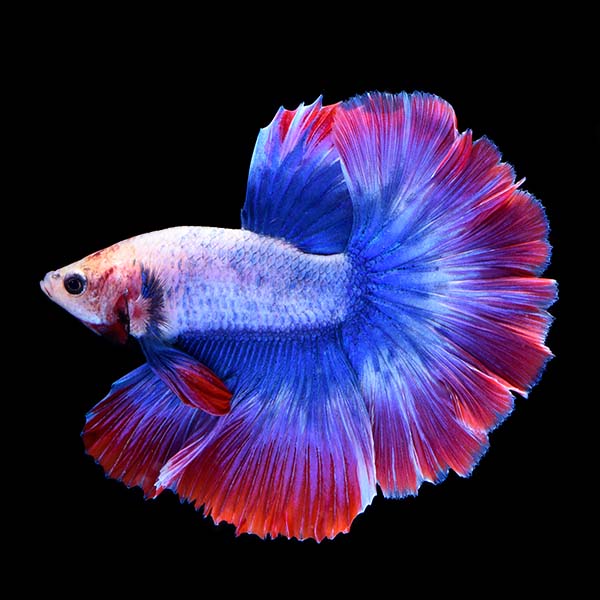Betta Fish Care: Vital Tips for a Healthy And Balanced and Satisfied Pet
Betta Fish Care: Vital Tips for a Healthy And Balanced and Satisfied Pet
Blog Article
How to Reproduce Betta Fish Efficiently: Professional Techniques and Insights for Hobbyists Aiming To Broaden Their Betta Collection
Breeding Betta fish needs a nuanced understanding of genetics and ecological conditions, making it necessary for hobbyists to approach the procedure with both diligence and care. Producing an optimal breeding setting, selecting the ideal sets, and observing the complexities of their courtship actions are foundational steps that can substantially influence the outcome.
Comprehending Betta Fish Genetics
Comprehending the genetics of Betta fish is critical for effective breeding, as it influences qualities such as color, fin shape, and behavior. Betta fish show a varied selection of shades and patterns, mainly figured out by their genetic makeup.
Along with pigmentation, fin morphology is one more significant facet of Betta genes (betta fish). The sizes and shape of fins are influenced by numerous genetics, including those that determine whether the fins are brief, long, or veil-shaped. Comprehending these genetic variants assists breeders forecast the phenotypic results of their children
Moreover, behavior characteristics such as aggressiveness and territoriality can additionally be influenced by genes. These habits play a vital duty in the breeding procedure, as they can impact spawning success and the total character of the resulting fry. By comprehensively recognizing these genetic concepts, breeders can make enlightened decisions, ultimately improving their breeding programs and attaining desirable outcomes.
Preparing the Reproduction Environment
Producing an optimal breeding setting is important for the successful reproduction of Betta fish. The first action in preparing this environment is to pick a suitable breeding container, ideally varying from 5 to 10 gallons.
Following, consider making use of a sponge filter or an air stone to supply mild water flow without developing strong currents that can worry the fish. It is important to set up plants or reproducing cones to offer hiding areas and advertise comfort for the woman throughout the spawning procedure. Floating plants, such as Java moss or water sprite, can also create a much more all-natural setting while helping with bubble nest structure by the man.
Prior to presenting the reproducing sets, ensure the water is conditioned and without damaging chemicals, such as chlorine or hefty steels. betta fish. Routine water modifications need to be performed to maintain optimal water quality, enhancing the chances of successful breeding. With these prep work in position, the breeding environment will support the health and health of both Betta fish
Picking Reproduction Pairs
Picking the appropriate reproduction sets is critical for attaining effective Betta fish recreation. When picking your reproduction pairs, think about several essential factors including health, important source personality, and genes. Healthy and balanced Betta fish display dynamic colors, clear eyes, and active behavior. Picking fish that are without condition makes certain a far better possibility of creating feasible offspring.
Personality is an additional crucial consideration, as Betta fish are understood for their hostile nature. It is advisable to select a man and lady that display suitable temperaments to lessen stress throughout the reproducing procedure. A tranquil man can motivate a smoother courtship, while a lady that is also aggressive may interfere with the process.
Genetic background additionally plays a considerable duty in the top quality of the offspring. Breeding fish that are genetically diverse can lower the danger of genetic wellness concerns and boost the general vitality of the fry. It is helpful to research the lineage of both the man and woman, focusing on preferable qualities such as fin type, color patterns, and dimension.
The Reproduction Process
The reproduction procedure of Betta fish calls for careful planning and interest to detail to make sure a successful end result. It is crucial to prepare an ideal breeding storage tank, preferably a 5-10 gallon aquarium with a temperature kept at 78-80 ° F. The storage tank check this site out needs to be equipped with a heating system, filter (preferably sponge kind to prevent solid currents), and lots of aquatic plants for the lady to hide.
As soon as the atmosphere is set, introduce the chosen reproducing set to the container, permitting them to adapt. Observe their behavior; the male will certainly show elaborate courtship rituals, consisting of flaring his fins and building a bubble nest. If the woman shows interest, she will certainly present vertical stripes showing preparedness for spawning.
When the lady is responsive, the pair will engage in a breeding embrace, during which the male feeds the eggs. Maintaining optimum water conditions during this duration is essential for the growth of healthy Betta fry.
Taking Care Of Betta Fry

Feeding Betta fry is important, as they call for a diet plan high in protein. Originally, they can be fed infusoria or fluid fry food, transitioning to carefully smashed top notch pellets as they grow. Feed tiny parts several times a day to urge healthy growth without overwhelming the storage tank with uneaten food.

As they develop, check their development very closely and divide any aggressive individuals to avoid harm. By giving a nurturing atmosphere and correct nourishment, enthusiasts can efficiently raise Betta fry right into lively, healthy fish, eventually boosting their breeding ventures.
Conclusion
Successful Betta fish breeding needs thorough focus to hereditary option, ecological problems, and care for the fry. By comprehending the genetics of Betta fish and preparing a proper reproduction setting, hobbyists can enhance the possibilities of producing vibrant, healthy offspring.
Report this page